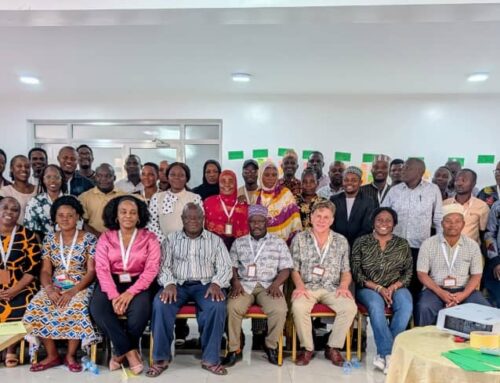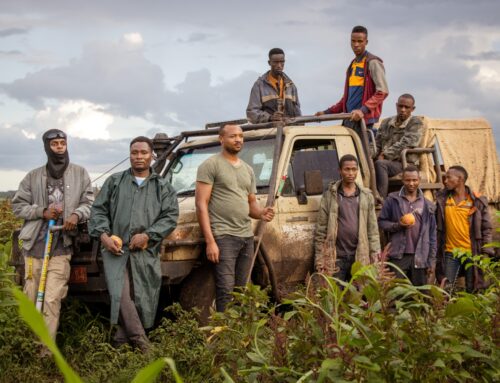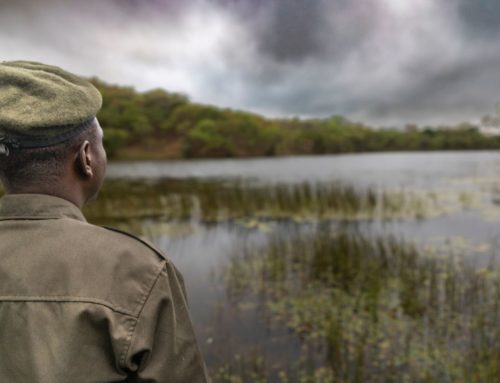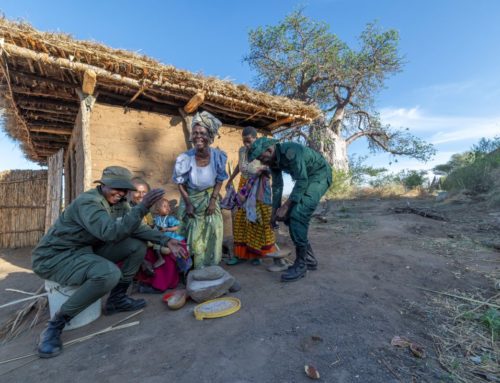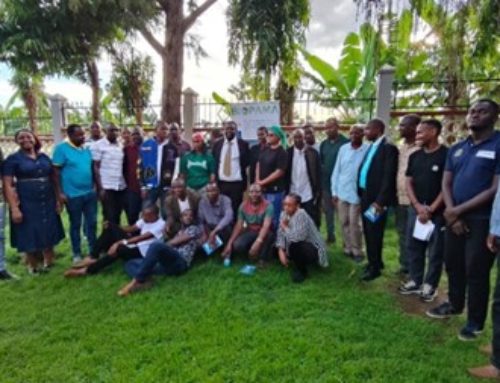Boosting Efficiency in WMAs
The Business of Community Conservation
Community Conservation Areas (CCAs) are known by various names across Africa. In Tanzania, they are Wildlife Management Areas (WMAs); in Kenya and Uganda, they are referred to as Conservancies; and in Zambia, they are known as Community Resource Boards (CRBs). Despite the different labels, the model is the same: communities taking the lead in managing and protecting natural resources while generating revenue. In this blog, we will use “WMA” to refer to all such Community Conservation Areas (CCAs).
Every successful business, whether it is a global brand or a small local enterprise, must answer three essential questions: Are we offering something valuable? Are we financially sound? And are we delivering real returns to our stakeholders?
WMAs are no different. As community-led enterprises, their product is natural resources. Their stakeholders include investors, district councils, tourists, donors, and, most importantly, the communities who have invested land and natural resources with the hope of a return: be it income, opportunity, or a better future. For a WMA to thrive, it must offer value, stay financially viable, and deliver tangible benefits to the communities that sustain it. If a WMA can tick all three of these boxes, it becomes more than just a conservation effort; it becomes a viable and resilient community-led social enterprise.
Yet many WMAs struggle to meet these basic benchmarks. The challenge is not from a lack of effort, passion or purpose, but due to the difficulty in maintaining efficient operations over time.
Success is not just about raising revenue. It is also about cutting costs without losing impact.
Communities must find ways to manage Community-led Conservation Areas (CCAs) on modest budgets while keeping people and their livelihoods at the centre of conservation. So, how do we build a lean and efficient operation that still delivers results?
In this blog, we focus on one piece of the puzzle: efficiency. Specifically, how WMAs can keep costs low without compromising on value.
For many communities, the difference between a struggling WMA and a thriving one is not just about more money; it is about doing more with what they already have.
Red Tape vs. Reality: The Hidden Costs of Conservation in Tanzania

The Promise and the Problem
When Wildlife Management Areas (WMAs) were first established in Tanzania, they carried a bold promise: protect nature while uplifting community livelihoods. Yet today, that promise is at risk, not because communities lack commitment or conservation potential, but because the system, from regulations to industry expectations, often ignores the real financial demands involved. It is not just about policies. It is about an entire model that has not fully accounted for what it truly costs to run a WMA effectively.
Across Tanzania, 21 out of 24 Wildlife Management Areas (WMAs) are in financial distress. These community-run conservation areas are expected to sustain themselves without government funding, a feat that demands generating at least $570,000 annually, a target that, for most, feels almost out of reach. Only a few WMAs in the north, like Ikona, Makame, Randilen and Burunge come close, largely due to their proximity to popular national parks and developed tourist infrastructure.
Policy Mandates That Undercut Progress
Instead of easing the burden on struggling WMAs, many current regulations often deepen the financial strain. One clear example is the mandatory requirement for every WMA to have a General Management Plan (GMP). In theory, it makes sense that every conservation area should have a plan. But in practice, the reality is far less straightforward. Drafting a GMP costs upwards of $30,000, a price tag that most WMAs simply cannot afford.
Waga WMA, for instance, earns roughly $30,000 in an entire year, meaning that meeting this one requirement would wipe out its entire annual budget, leaving no resources for anti-poaching efforts, wildlife monitoring, or vital community projects. Yet without a GMP, a WMA loses legal recognition. Ironically, national parks do not face any such legal risk and continue operating without active GMPs.
From Survival to Smarter Policy
This General Management Plan, which costs $30,000, is not just a technical requirement—it’s a major fundamental barrier that prevents communities from achieving their dual mission of conservation and development. The solution is not to cut costs blindly, but to create policies that are financially grounded and context-aware. New policies should be grounded in financial impact assessments, set reasonable limits on compliance costs, and, where possible, include cost-sharing models with government agencies like the Tanzania Wildlife Management Authority (TAWA). By building regulations that match real-world conditions, we can strengthen WMAs instead of holding them back.
If Tanzania wants its WMAs to succeed, the policy framework must evolve, not by lowering the bar, but by aligning rules with the realities on the ground. Only then can we shift WMAs from survival mode to efficient, community-driven success.
Smarter Rules, Stronger Results: How Policy Reform Can Help WMAs Do More with Less
When it comes to Wildlife Management Areas (WMAs), the right policies can make or break success. Too often, well-meaning regulations are created without considering the day-to-day realities on the ground, especially the financial ones. If we want WMAs to thrive, policy reform must go beyond theory and embrace practical, cost-aware solutions that work for communities, not against them.
Here is how:
1. Building a More Robust Financial Regulatory Framework
When policies are designed, they should account for financial realities. What helps in one area may unintentionally harm another. To ensure regulations are both practical and sustainable, financial impact assessments should be a standard part of policy development. This means every new regulation would be evaluated for its costs and consequences upfront. Existing policies, such as the General Management Plan (GMP), which costs over $30,000, should also undergo review to assess whether they are supporting or undermining the effectiveness of WMAs.
2. Increasing Cost Transparency and Better Planning
Regulations should include detailed breakdowns of compliance costs. This enables WMAs to plan effectively, manage resources wisely, and avoid unexpected financial strain. Better visibility into costs supports stronger financial management and more strategic investment in conservation and tourism initiatives.
3. Capping Compliance Costs
No WMA should be forced to choose between meeting legal requirements and protecting wildlife. Setting a cap on what WMAs can be asked to spend on regulatory compliance would prevent new rules from draining WMA budgets with unaffordable mandates, helping them operate sustainably without being overwhelmed by government requirements.
4. Shifting to Cost-Sharing Models
Adopting a cost-sharing model—where regulatory bodies like the Tanzania Wildlife Authority (TAWA) cover up to 50% of compliance-related costs—helps reduce the financial burden on WMAs while giving TAWA a stake in the game. This shared responsibility allows more resources to be directed toward vital priorities such as wildlife protection, infrastructure development, and community benefit programs. When regulators have skin in the game, policies become more practical and effective.
5. Providing In-Kind Support Instead of Outsourcing
Rather than relying on costly consultants or outsourced services, regulatory bodies can strengthen WMAs by offering direct technical assistance and management support. This practical, hands-on approach makes expertise more accessible, especially for WMAs with limited capacity, and builds lasting institutional strength.
Ultimately, effective policy reform should not just be about rewriting the rules; it is about rewriting them with a calculator in hand, making sure every new requirement is rooted in financial reality. By aligning regulations with economic realities, WMAs can do more with limited resources, not by cutting back, but through smarter and more tailored governance.
The Big Cost: Rethinking the Price of Protection in WMAs
Why traditional anti-poaching models are breaking budgets and how a community-first approach is doing more for less.
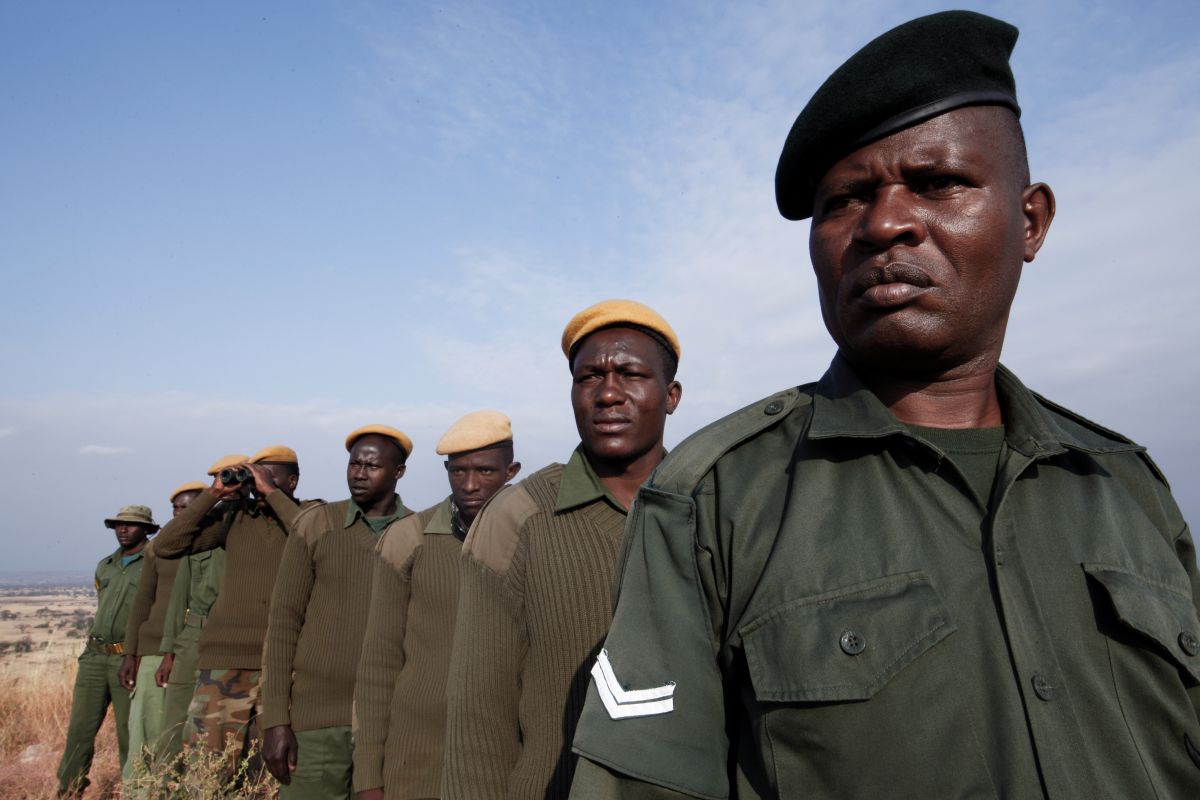
If there is one line item that can make or break a Wildlife Management Area, it is protection.
A single ranger unit—10 rangers, one vehicle, one ranger post—can cost over $50,000 per year. Multiply that by two or three units, and many WMAs are looking at annual protection costs between $100,000–$150,000. That’s more than half the total budget for most, and in some cases, more than they earn in an entire year.
And yet, you cannot cut corners.
But here is the hard truth: protection cannot be done on the cheap. You cannot run a patrol team with five rangers and no vehicle. It does not work. Rangers also need time off, mobility, and backup. Understaffed or poorly equipped units do not just fail; they can become a risk in themselves.
The Real Cost of “Standard” Protection
Let us do the math.
A ranger earns around $2,400 annually. Add gear, rations, and training—now it’s $3,800 per ranger. Multiply that by 10: $38,000. Add a vehicle? Fuel, maintenance, and insurance will cost you another $12,000. It all adds up.
So how do you reduce costs without compromising security?
This is where conventional models of protection start to crack, and where community-led models begin to shine.
In many national protected areas and some private concession areas, protection costs average $880 per km². Some high-security zones report costs up to $2,000 per km². And the standard recommendation? One ranger per 25 km² in low-risk zones, one per 15 km² in tougher terrains. But these numbers are more than just statistics—they represent a mindset. One focused on militarized protection where patrols dominate and community voices are often sidelined.
The Shift: From Patrols to People
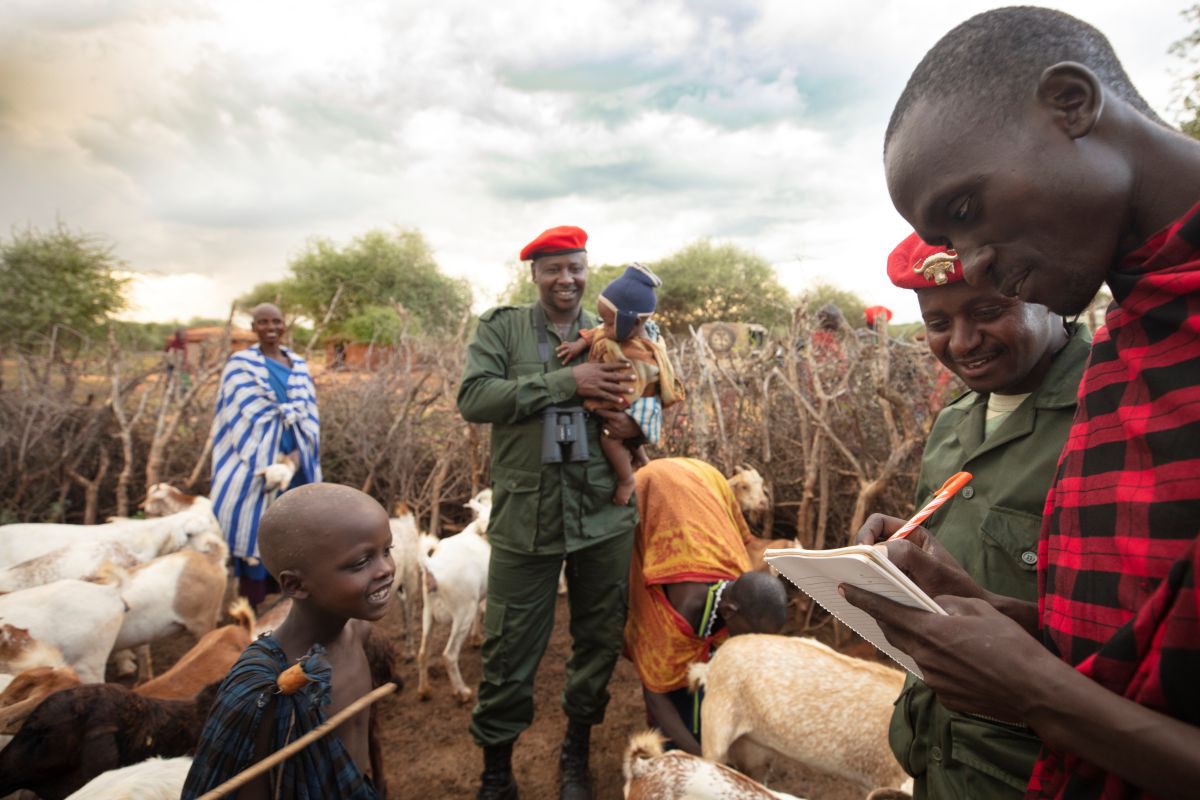
Now consider this: in one Tanzanian model, protection costs dropped to $23 per km² while reducing poaching by 93%.
How?
At Honeyguide, we asked a different question:
What if protection did not begin with patrols, but with people?
In our model, protection is intelligence-led, not patrol-led. We have placed the community at the heart of wildlife protection.
Think of it like firefighting. Firefighters do not roam the streets hoping to see flames; they respond to calls from people on the ground. Intelligence-led protection works the same way. When someone spots danger, whether it is a snare, a gunshot, or an unfamiliar footprint, they raise the alarm. And more often than not, that someone is a local herder or farmer who knows the land better than anyone.
By allowing legal community land use, like grazing, hundreds of people move through the WMA each day, creating a vast network of natural surveillance. This grassroots vigilance not only stretches coverage far beyond what a few rangers could achieve, but it also makes protection smarter and far more affordable. When communities see conservation as something that benefits them, they protect it like they would their own homes. They speak up, act fast, and become the frontline.
And the impact is undeniable. In Honeyguide-supported areas, 99% of poaching-related arrests come from community tip-offs, and in just three years, elephant poaching dropped to zero. When protection begins with people, the results speak for themselves.
But this kind of success does not happen by chance. It only works when the community truly believe in, and benefit from, the protection of their land and wildlife.
Locals know the land, the people, the patterns. They notice when something is off long before an outsider would. But they will only speak up if they trust the process. And that trust hinges on three things:
First, that their information leads to action.
Second, that every suspect is treated humanely and fairly.
Third, their identities must remain fully protected.
In some places, a small incentive can help. In others, trust alone carries the system. Either way, when these conditions are met, something powerful happens: people stop being passive informers and start becoming active protectors. They do not just report illegal activity; they help prevent it.
This kind of protection is not only effective, it is scalable. It is sustainable. It is smart. If protection is consuming 60% of a WMA’s operating budget, the real question is not whether there is a better way, but why we have not already made the switch.
What Could $50,000 Do in a Community-Led Model?
So here is a challenge worth considering: what could $50,000, the cost of running a single ranger unit, achieve in a community-led model?
Instead of one more ranger unit, $50,000 could:
- Build hundreds of fortified bomas (traditional livestock enclosures) to protect livestock from carnivores like lions and hyenas.
- Fund dozens of scholarships for local students.
- Equip villages with Human Elephant Conflict-prevention toolkits (Honeyguide distributed 343 in 2024).
- Support schools, clinics, and water systems.
Because in the end, the meaning of “protection” depends on who you ask. For a conservationist, it might mean saving species. For a tourist, it is about safety. But for a community, it must go deeper—it has to mean security, opportunity, and trust.
And when protection becomes shared, not imposed, it does not just cost less. It works better.
“At its core, protection is not just boots on the ground. It is built on trust, shaped by shared knowledge, and powered by the belief that conservation works best when it belongs to everyone.”
-Honeyguide CEO, Sam Shaba.
Making Every Coin Count: Financial Tools that Help WMAs Do More with Less
How smarter budgeting leads to stronger conservation
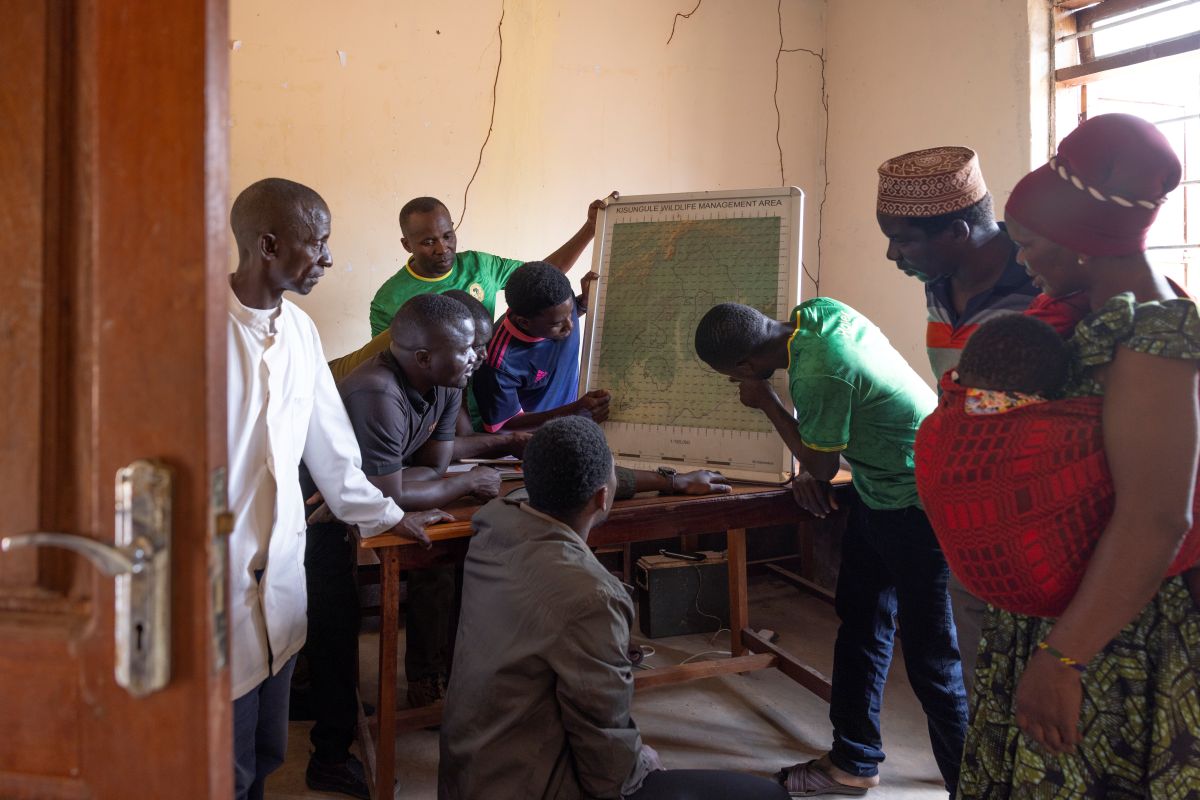
Running a WMA takes money—there is no way around that. But the real challenge is not just getting more money. It is using what you have in the smartest way possible. That is where efficiency comes in. The best WMAs know how to do more with less.
Many WMAs face the same problem: as income grows, expenses grow even faster. More tourism, more staff, more fuel, more costs. But it does not have to be this way. With the right tools, WMAs can grow without wasting money, and sometimes even improve by spending less.
Honeyguide supports WMAs with simple financial tools that help leaders make better decisions about how they use their resources. These tools help WMAs ask the right questions: Can we create more impact without spending more? Can we reduce waste? Can we plan better, earlier?
When WMAs take control of their finances and focus on efficiency, they become more resilient. They protect more land, support more people, and save more wildlife, all without breaking the bank.
In conservation, every coin counts. And with the right tools, even modest budgets can deliver extraordinary results. Here are some of the tools helping them get there:
- BEST (Business Enterprise Sustainability Tool) – Think of this as the financial blueprint for a WMA. It guides leaders to set realistic goals, plan activities around available resources, and track financial health over time.
- WMA Annual Budget – The foundation of all financial planning. This budget outlines the full cost of running a WMA and helps ensure resources are allocated where they matter most.
- RAT (Rapid Assessment Tool) – A quick, effective way to assess a WMA’s financial health and what it needs to break even. It shifts the focus from what’s missing to what’s possible.
- Cashflow Tool – A simple tracker that shows money coming in and going out, helping WMAs avoid shortfalls and keep partners informed.
CONCLUSION: Smarter Systems, Stronger WMAs
Why the future of conservation depends on better decisions, not just bigger budgets
The success of Tanzania’s Wildlife Management Areas will not be determined by how much money they can raise. It will depend on how wisely they use what they have. Efficiency is not about cutting corners. It is about focus. It is about asking the hard questions, facing uncomfortable truths, and putting every dollar, every hour, and every decision to work where it counts most.
If we want community-led conservation to succeed, we cannot keep playing by the old rules. That means rewriting the policy playbook. Fixing the cracks in financial planning. Shifting protection from patrol-heavy models to community-first systems that actually work. This is not about doing less. It is about doing smarter.
Efficiency is not just about the big wins. It is about plugging the small leaks that quietly sink entire systems. Every WMA budget has its obvious costs, like ranger salaries or fuel. But it is the hidden costs, like depreciation, that can do the most damage over time.
Take vehicles: a Land Cruiser might seem like a one-off purchase, but if you are not tracking its value loss – around $7,000 a year- you are missing a key drain on your finances. Smart WMAs do not just earn money; they defend it. They track every cost, anticipate every risk, and build habits that make them more resilient year after year.
Because here is the truth: community conservation is at a crossroads. We either adapt or watch a generation’s promise unravel under the weight of outdated systems.
But there is another path. One built on sound policy, sharp financial tools, and protection models that start with people, not just patrols. The opportunity is clear: with the right reforms and an unwavering focus on efficiency, WMAs can protect more wildlife, uplift more communities, and secure a future where conservation does not just survive, but thrives.
Conservation is not saved by more money. It is saved by better choices.
Photo Credits: Monica Dalmasso/Felipe Rodriguez


